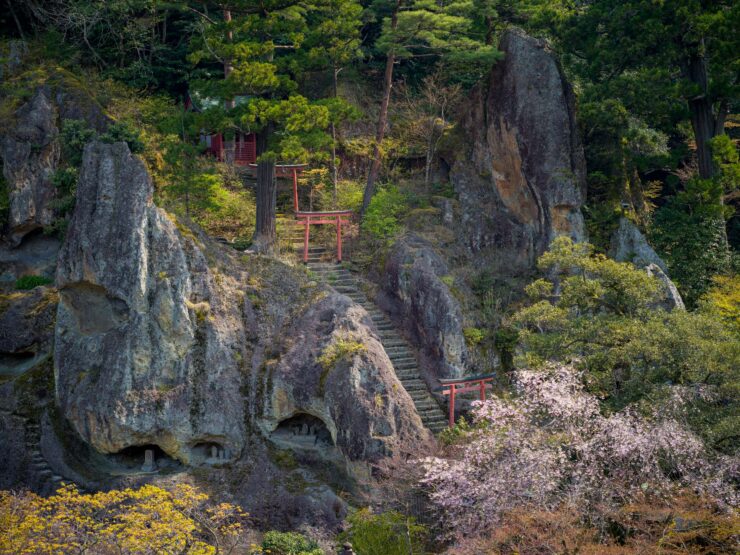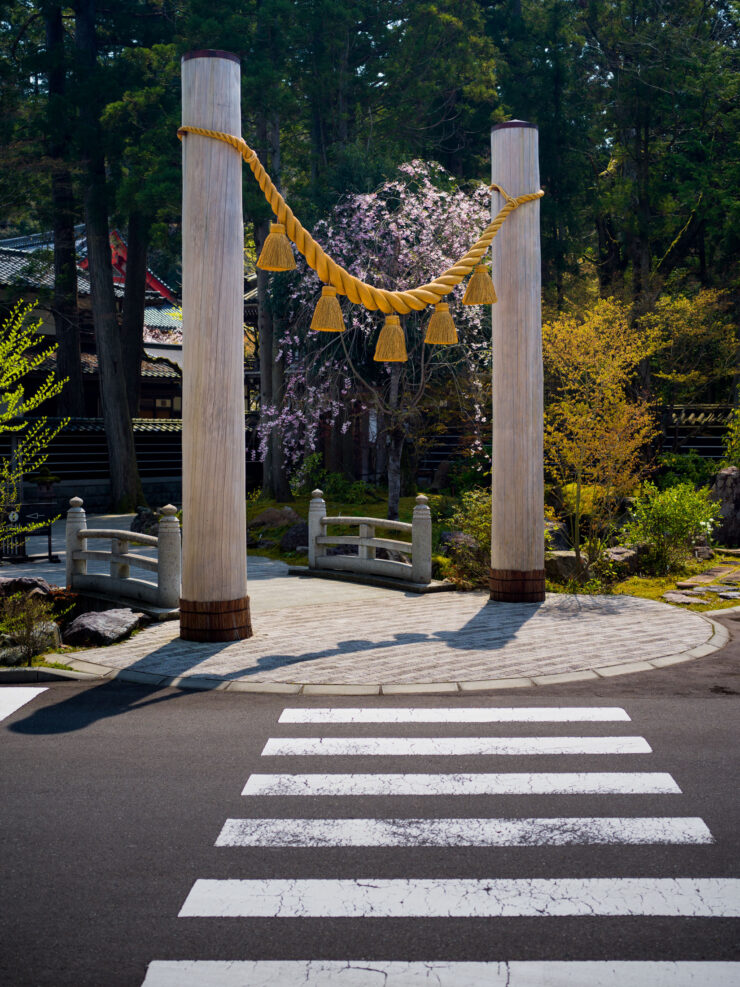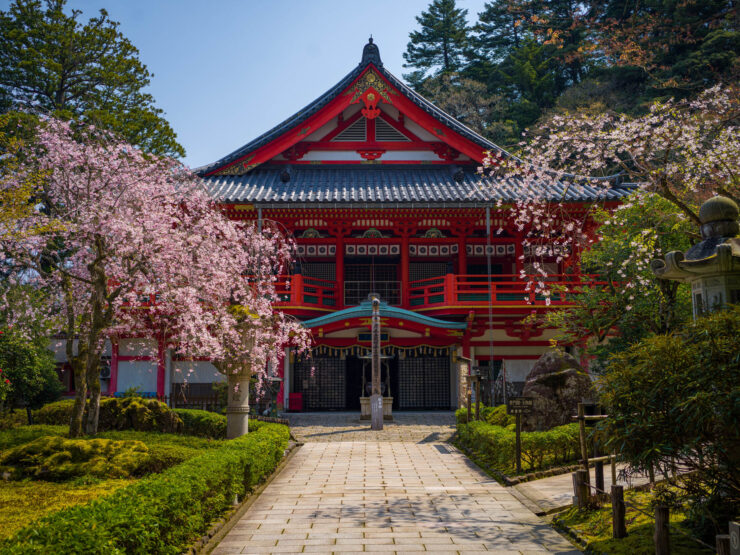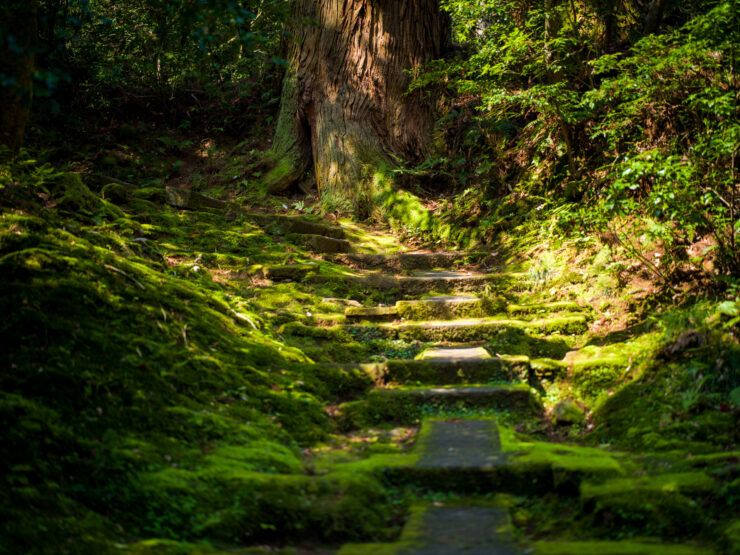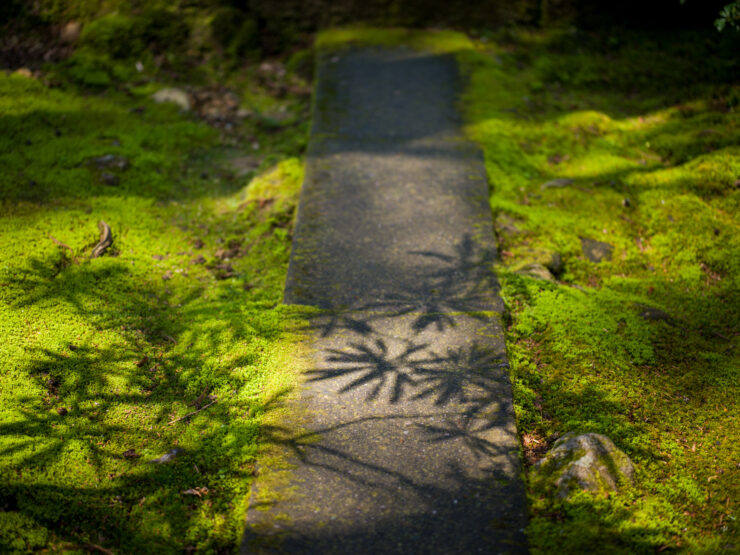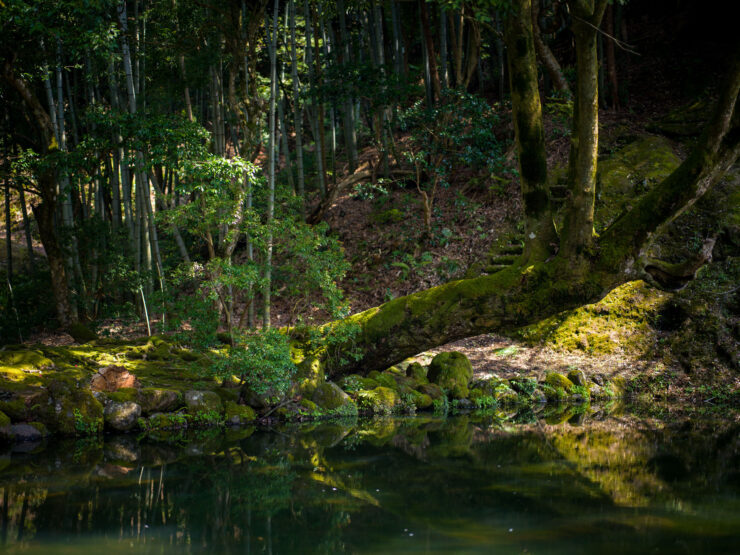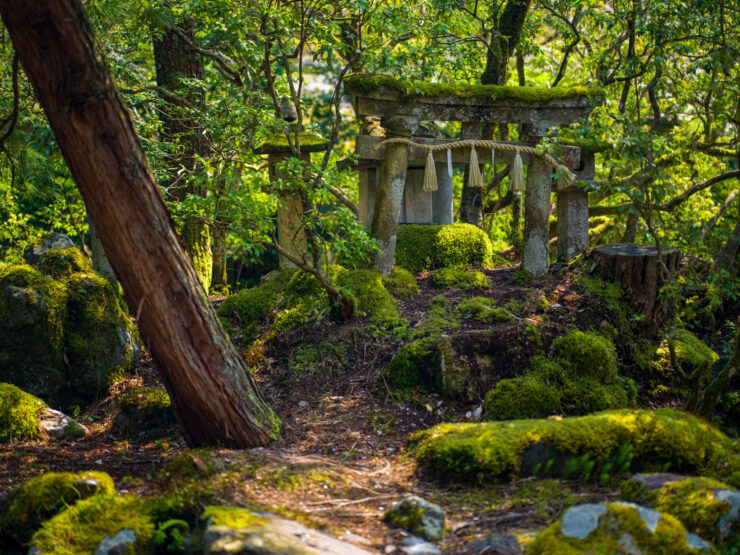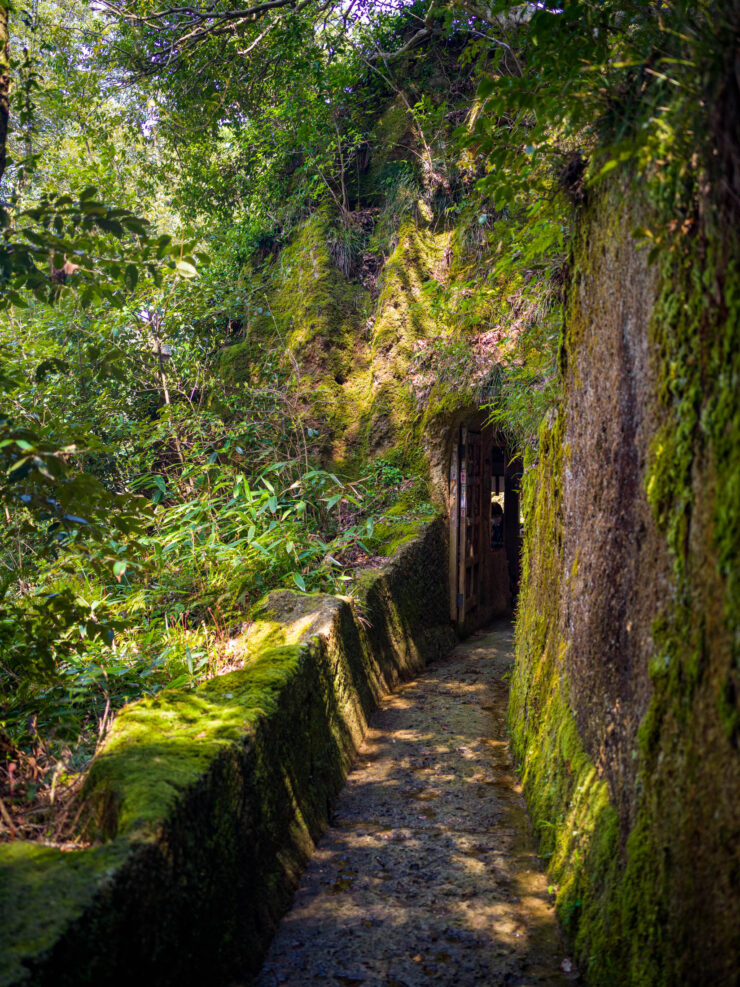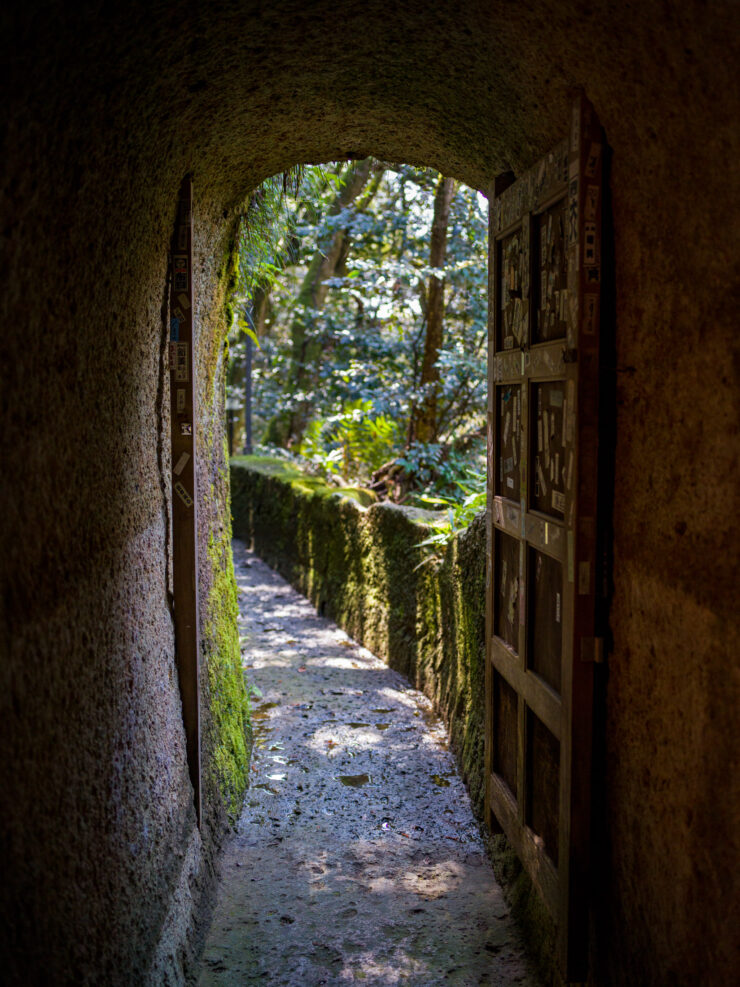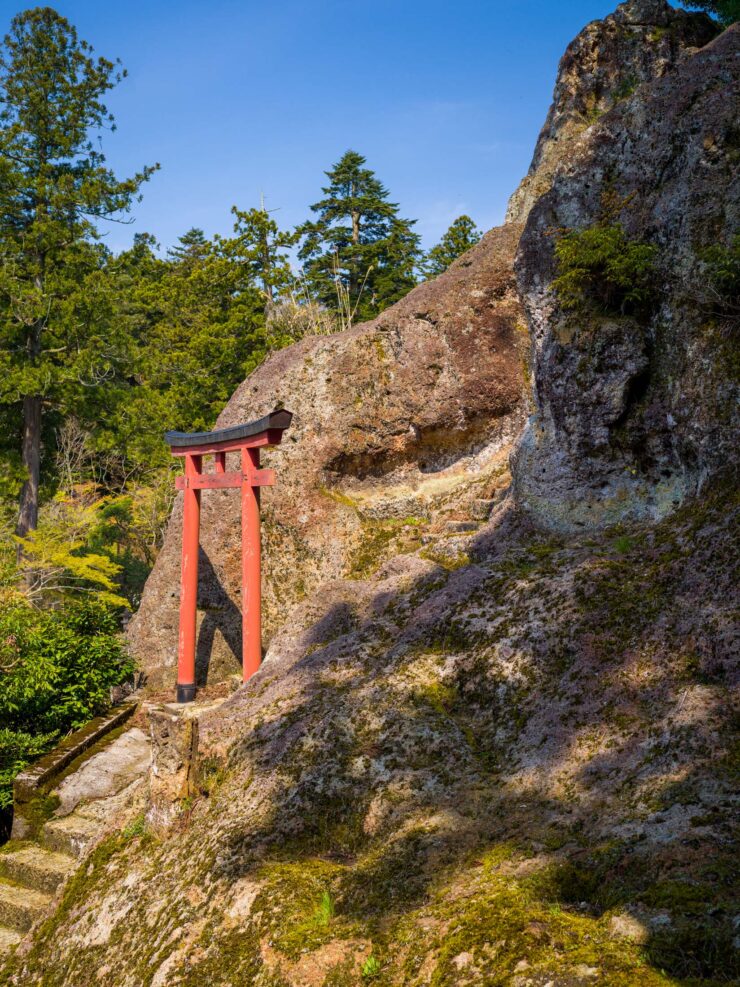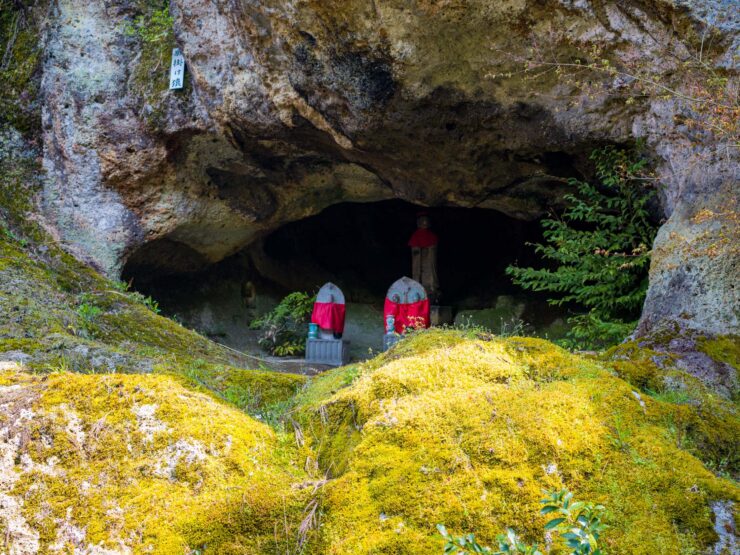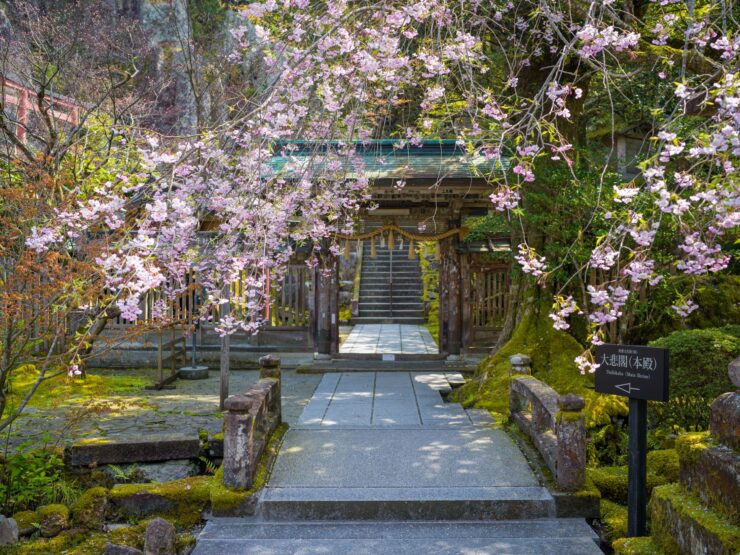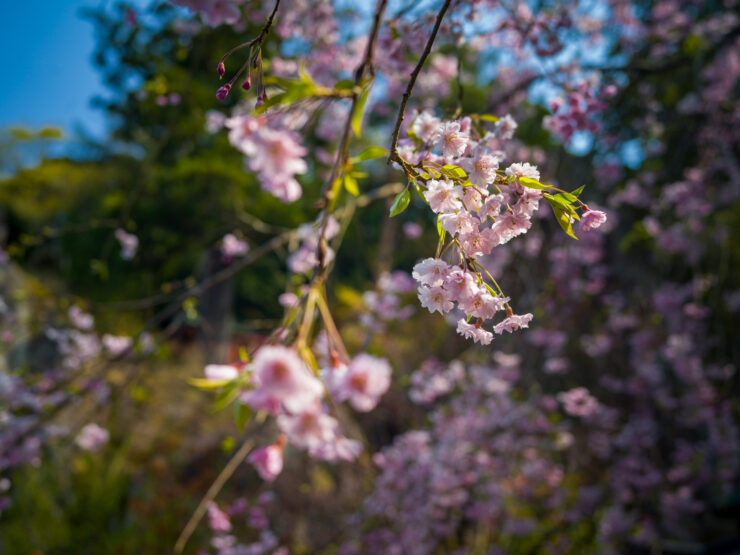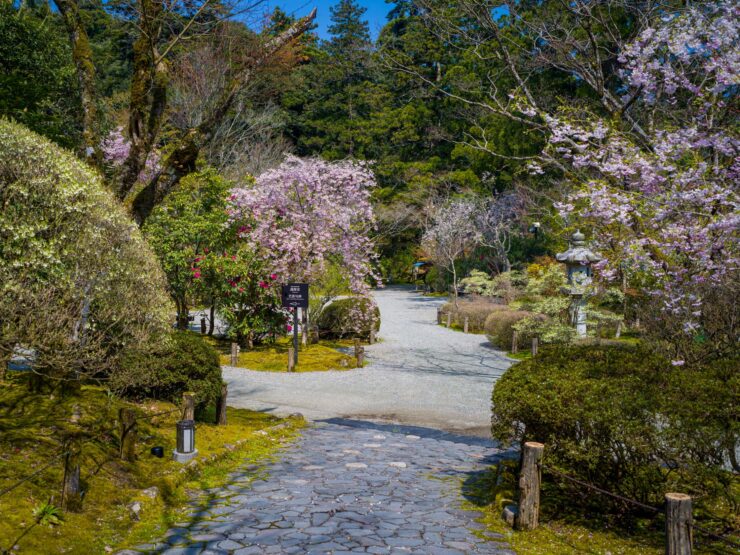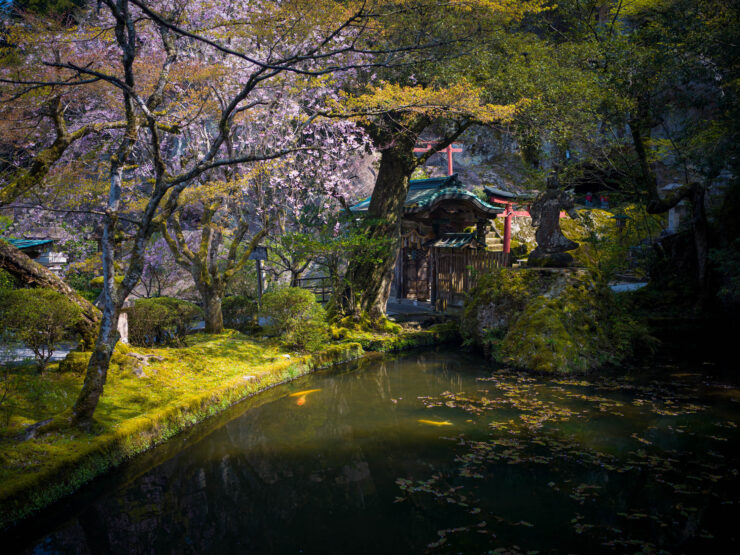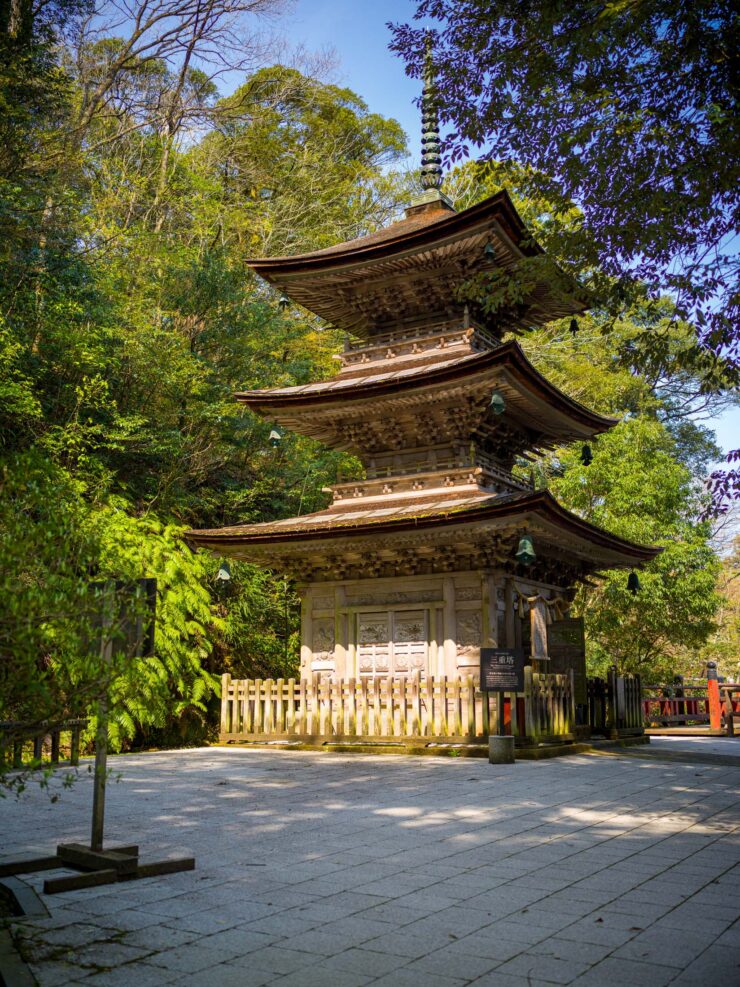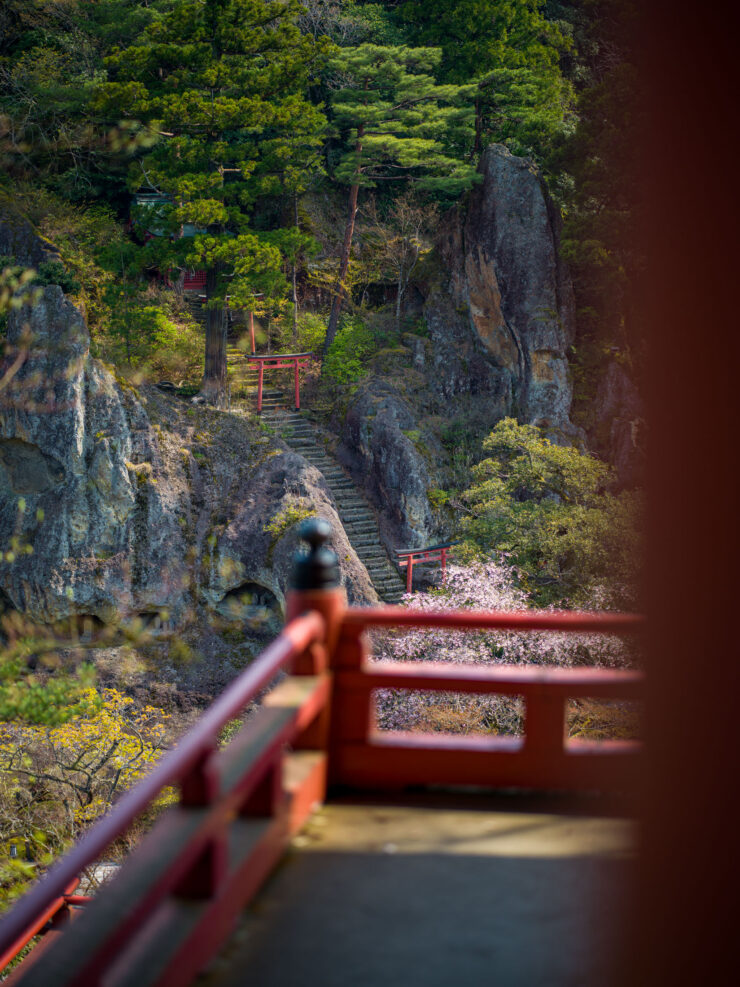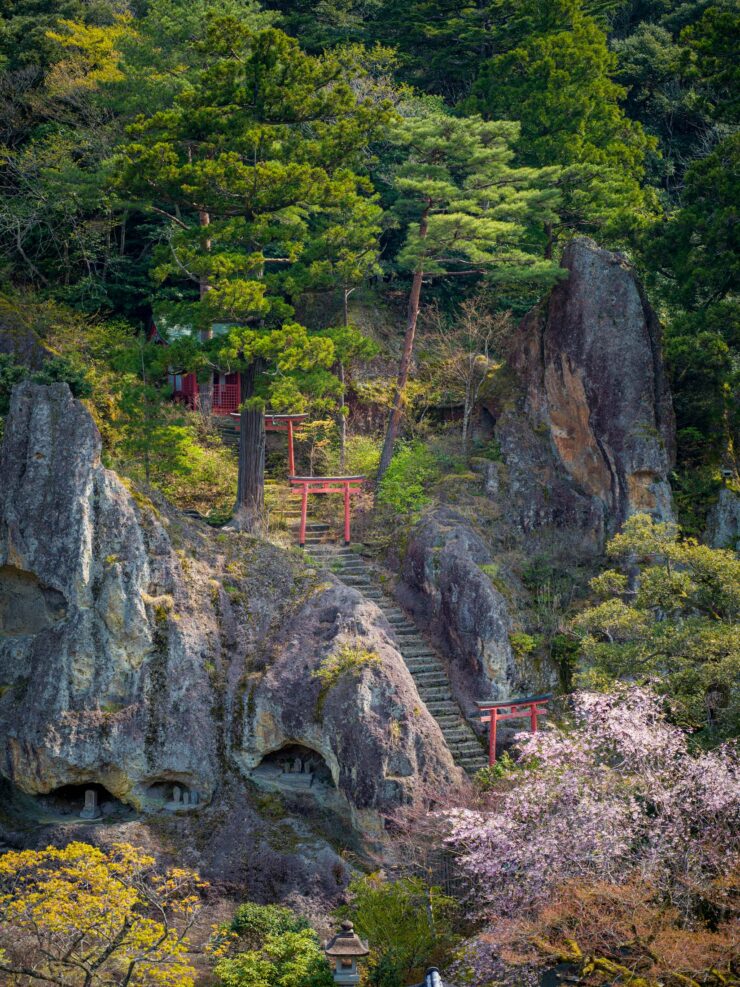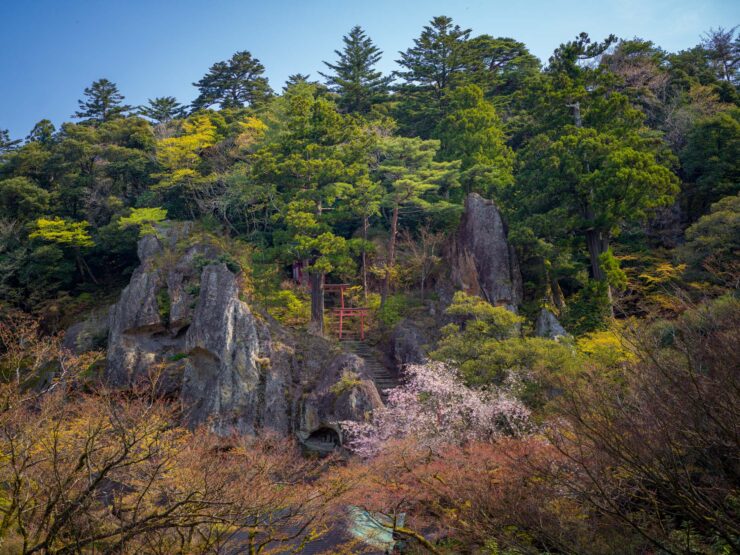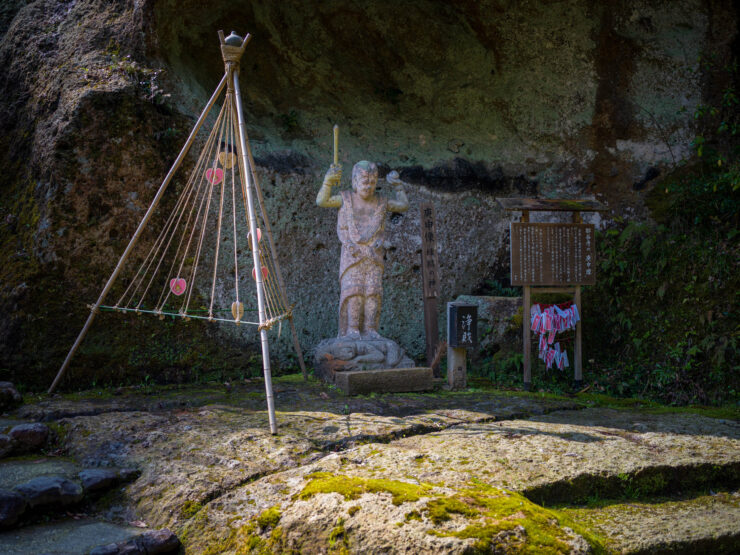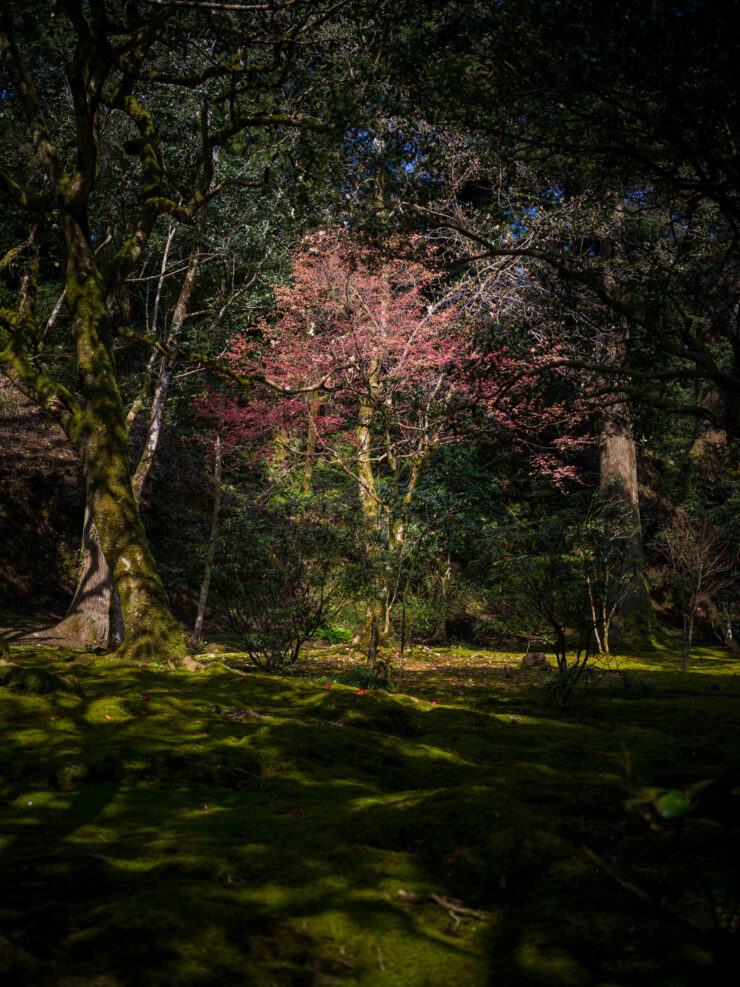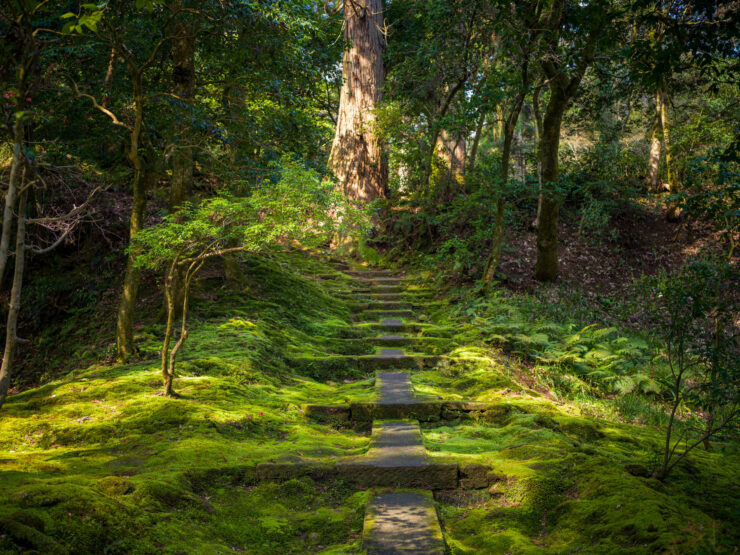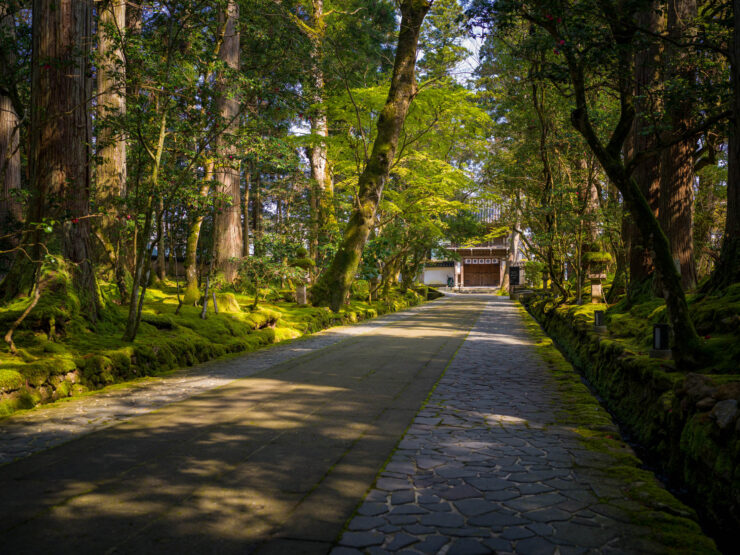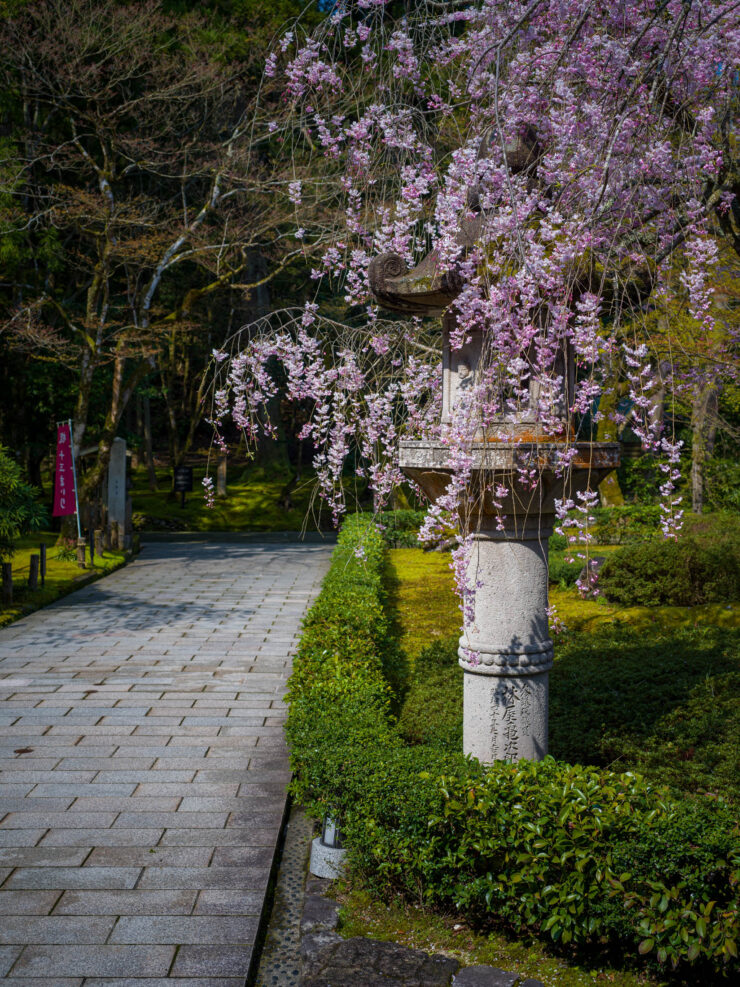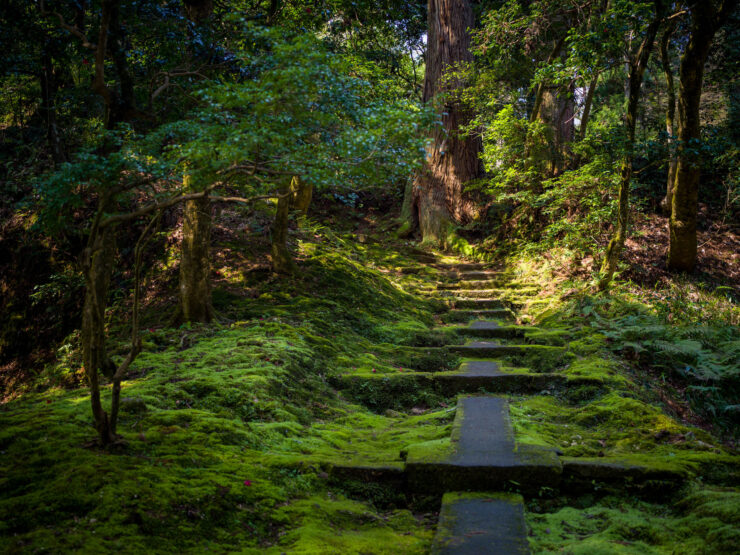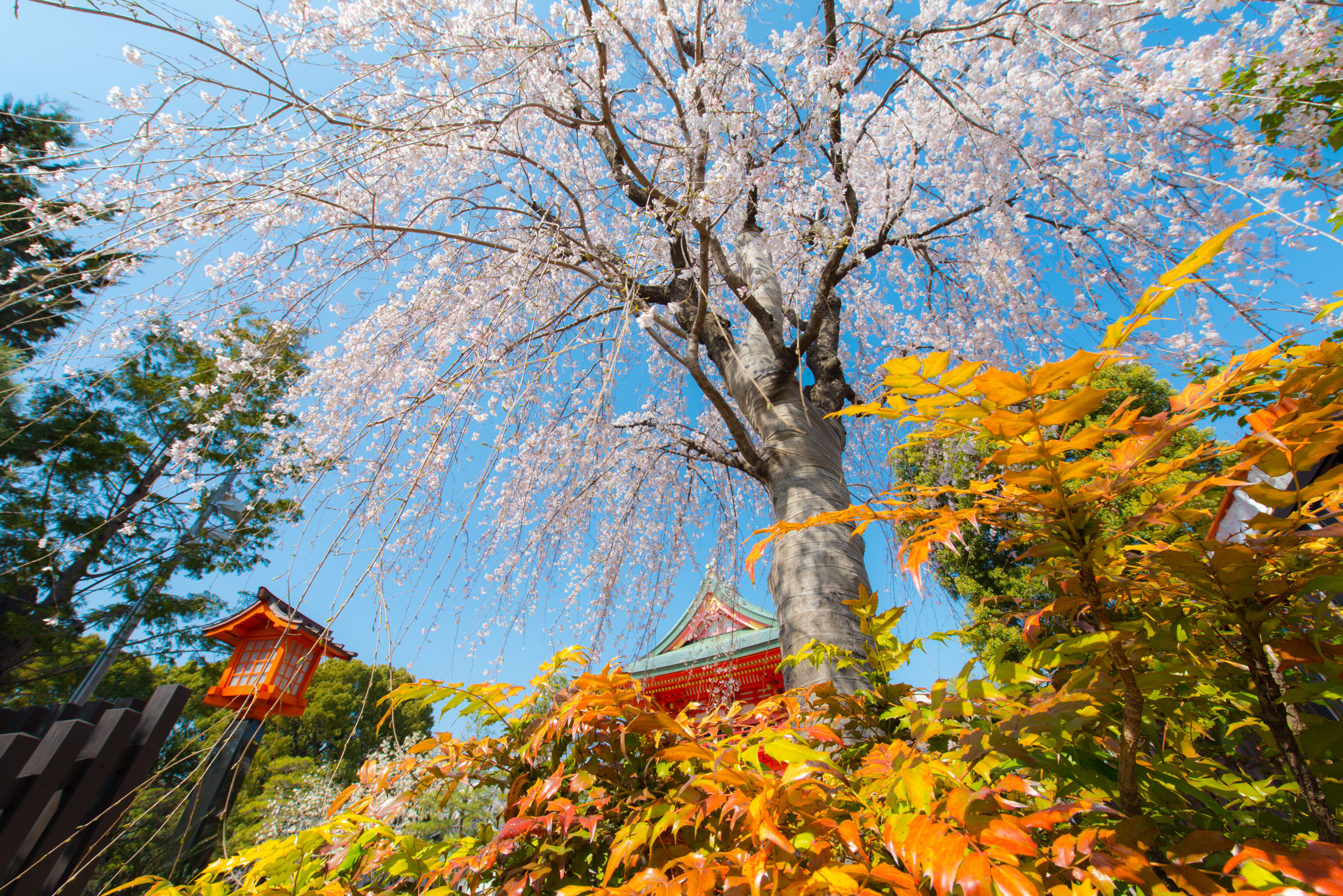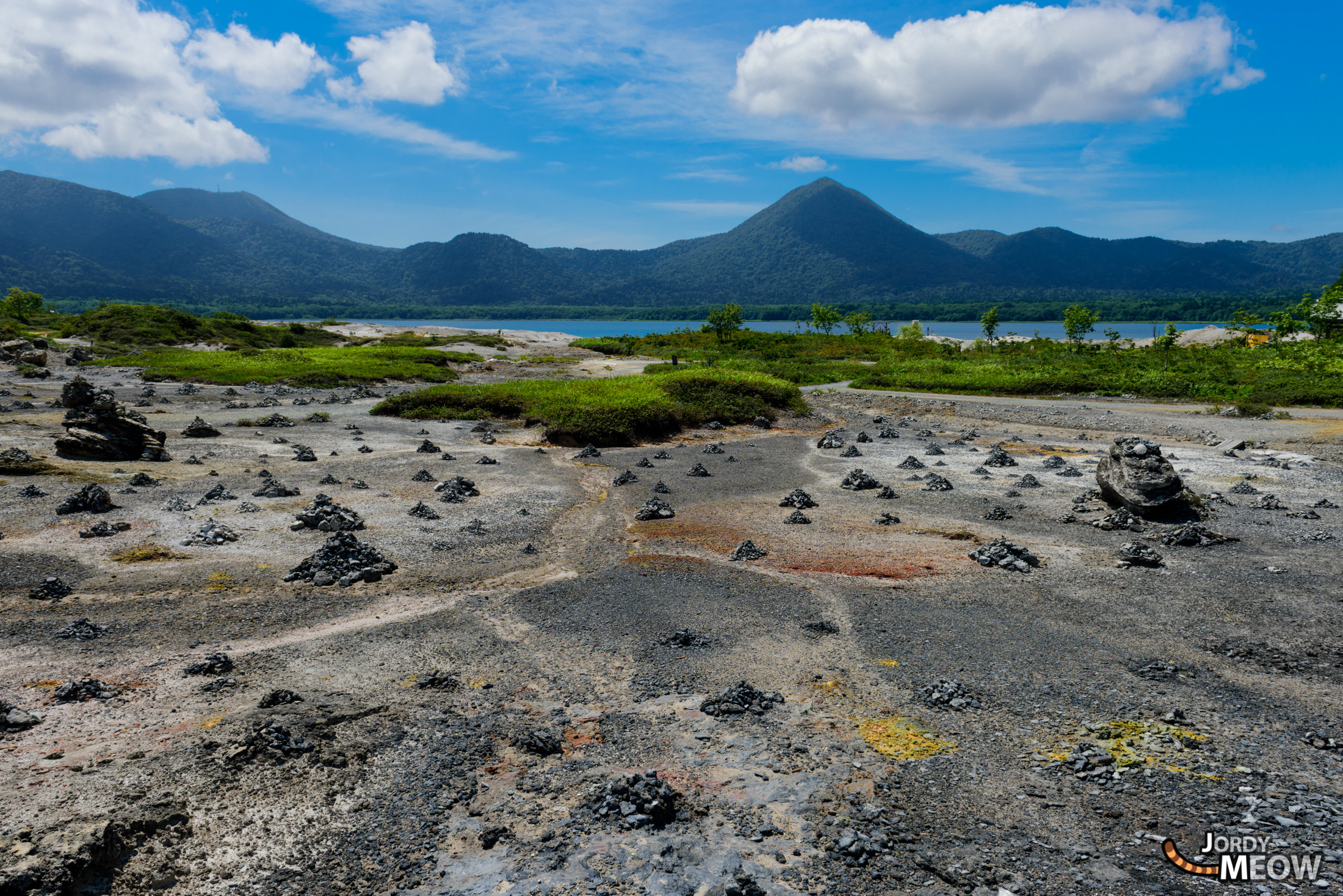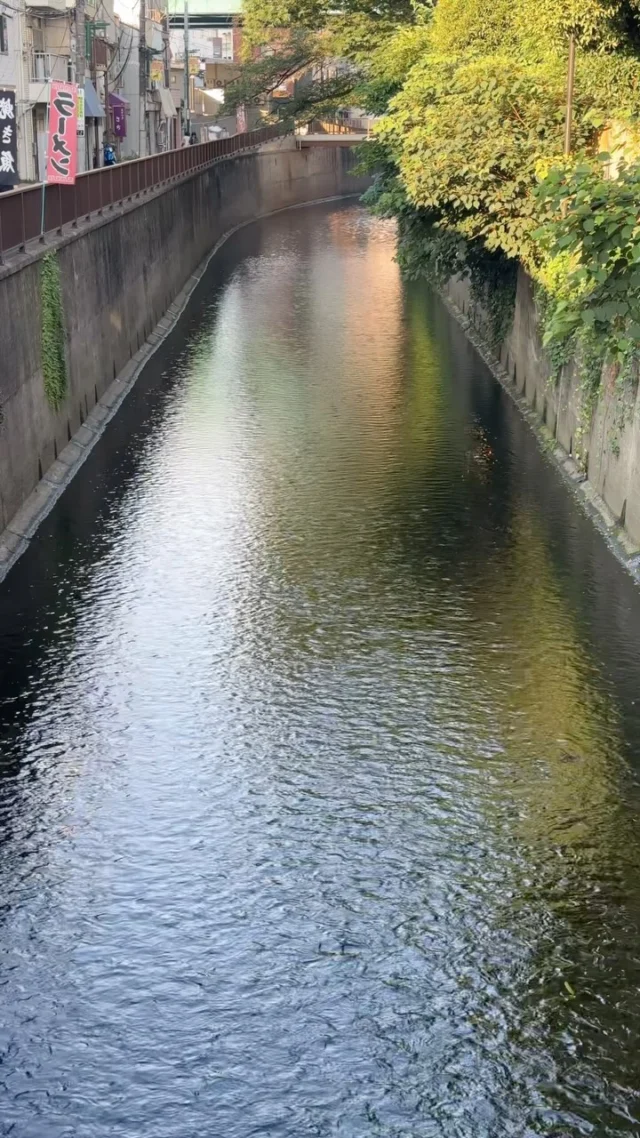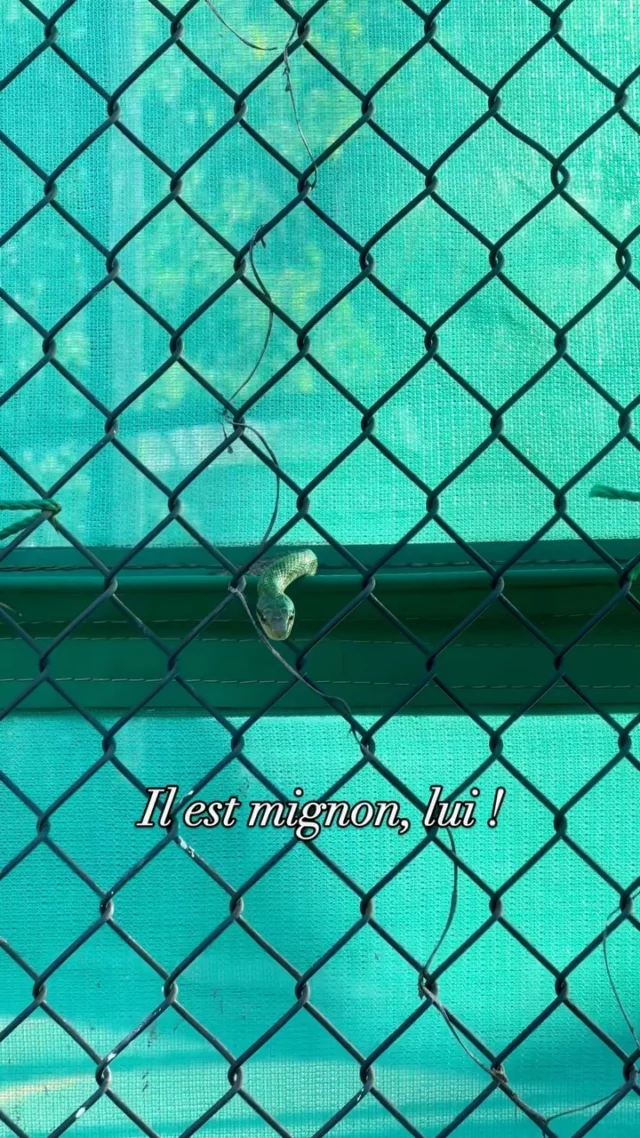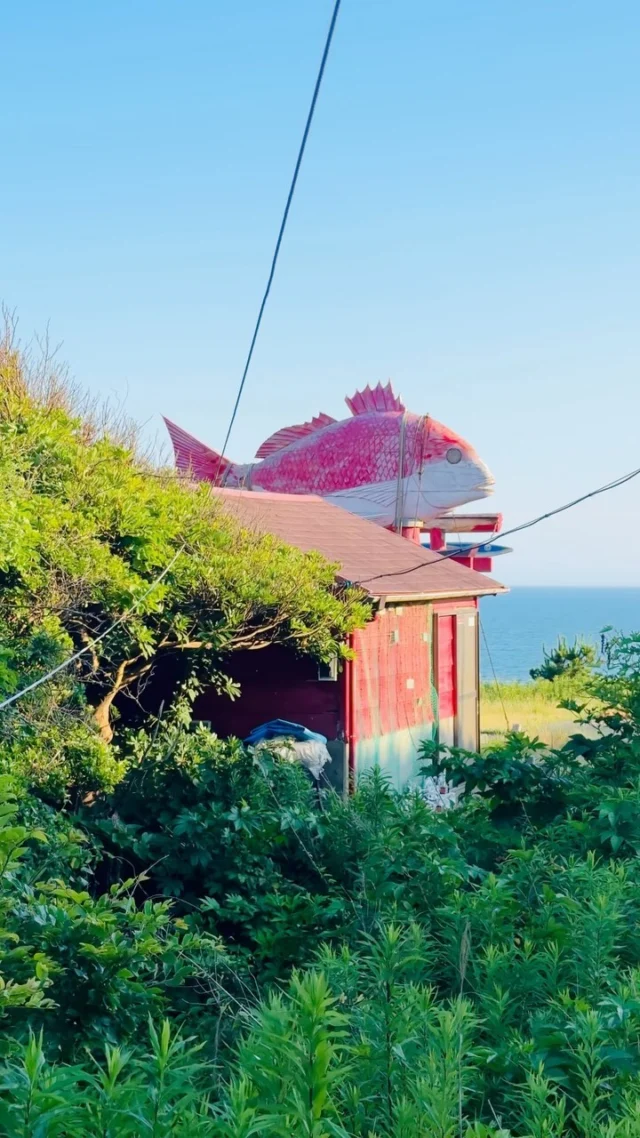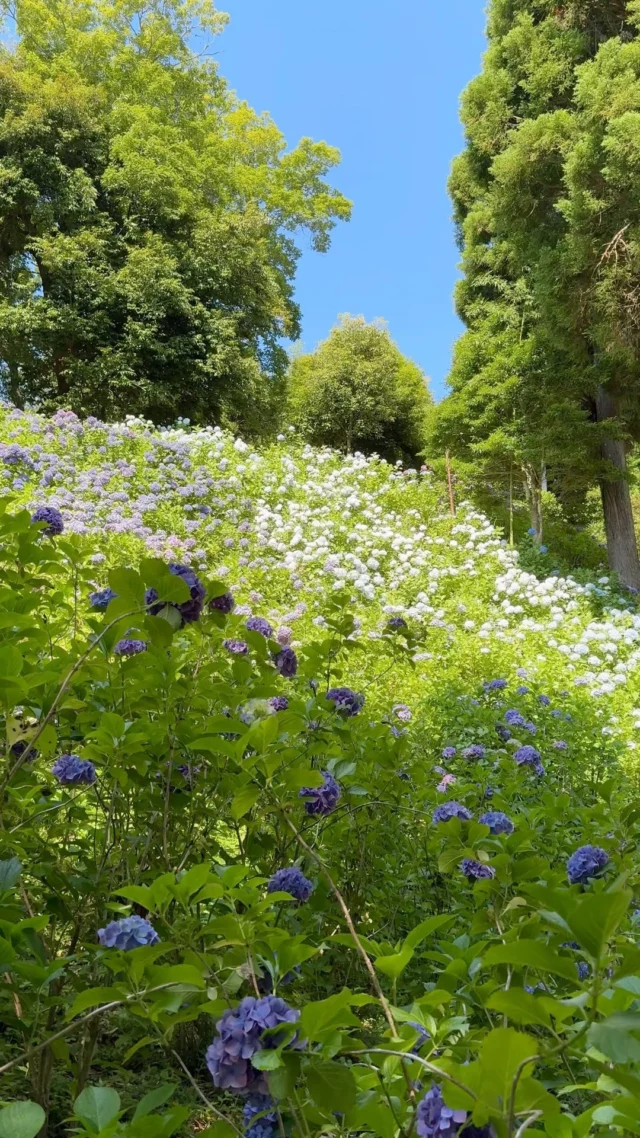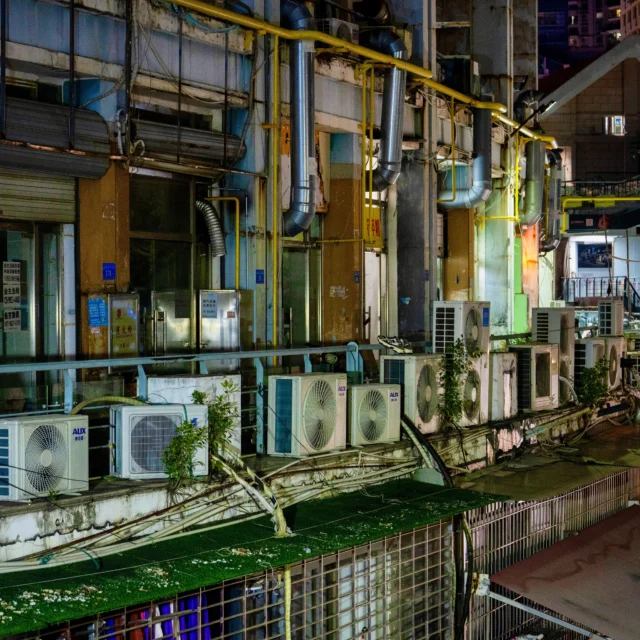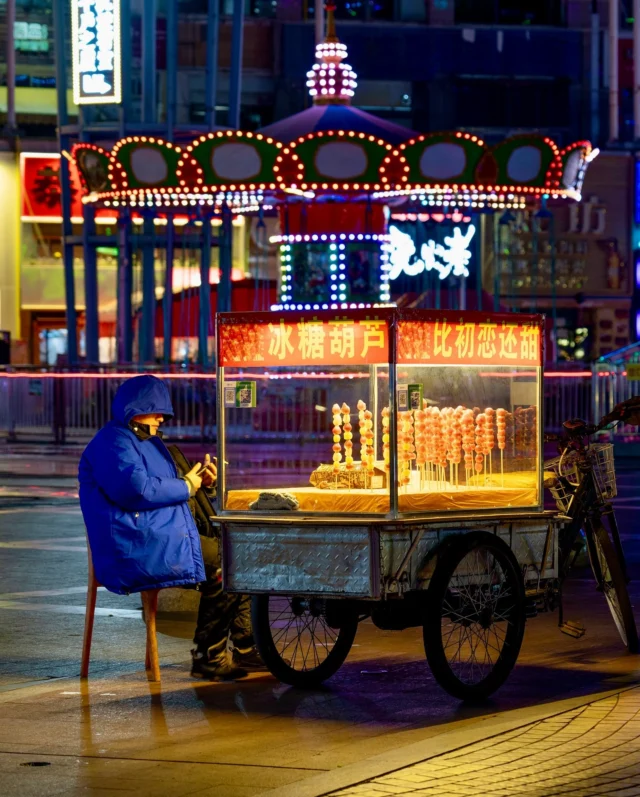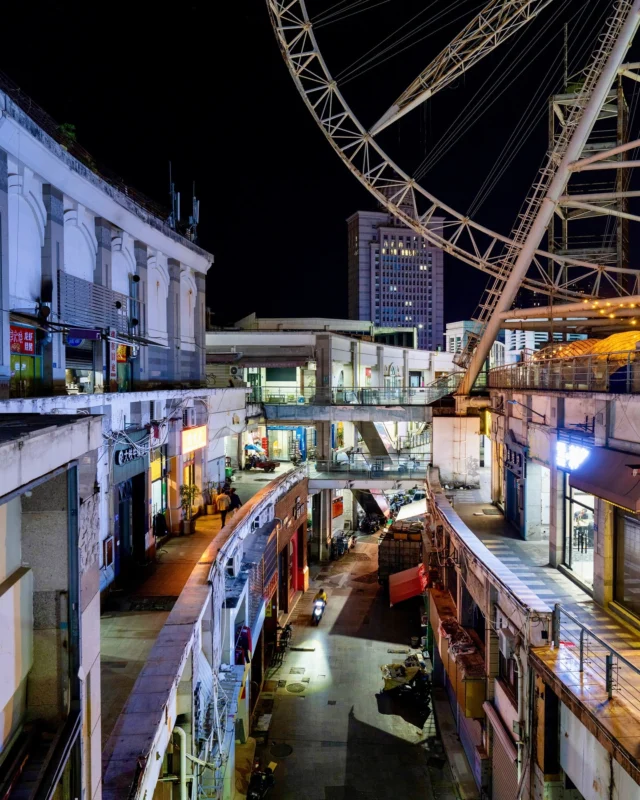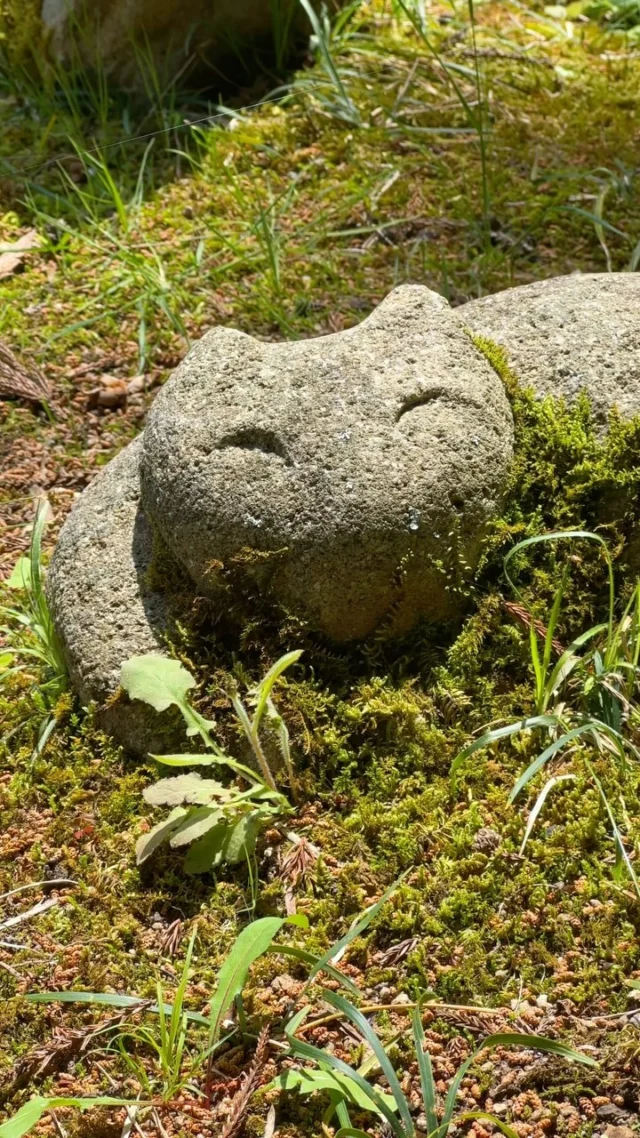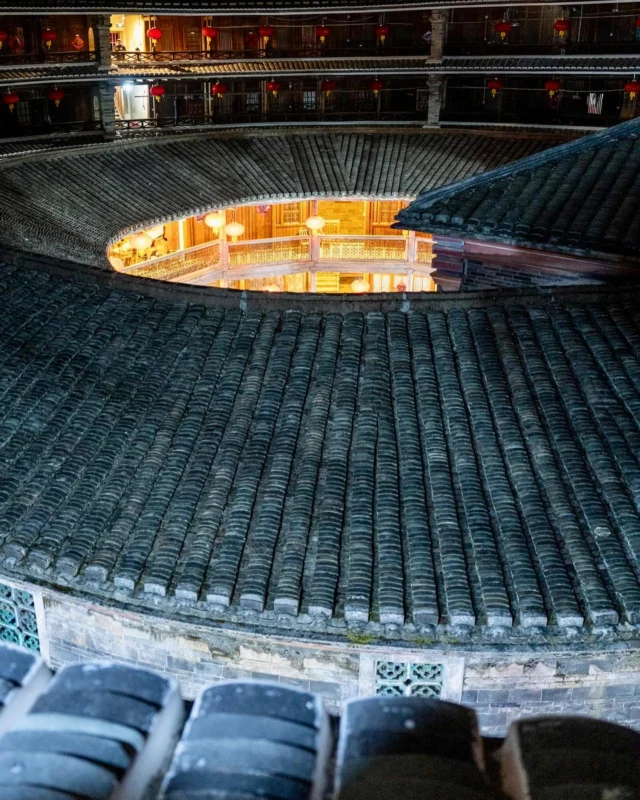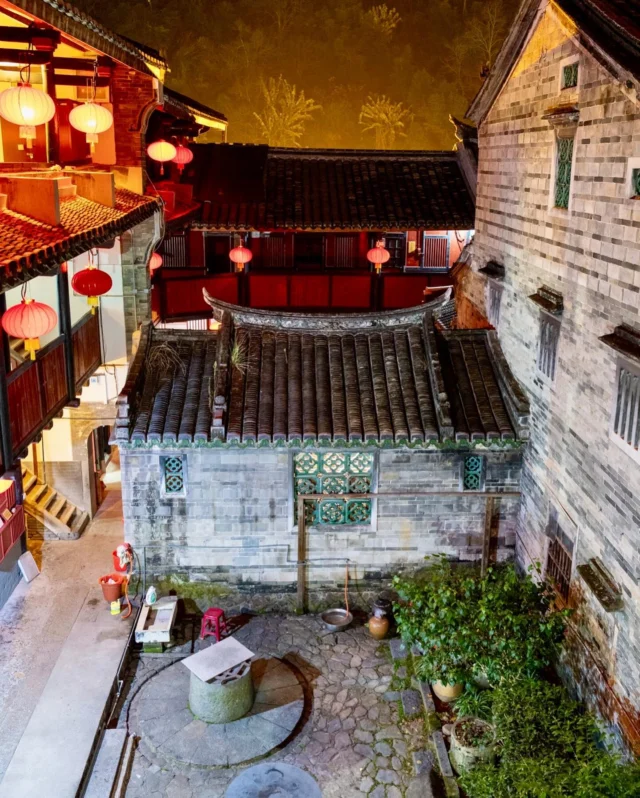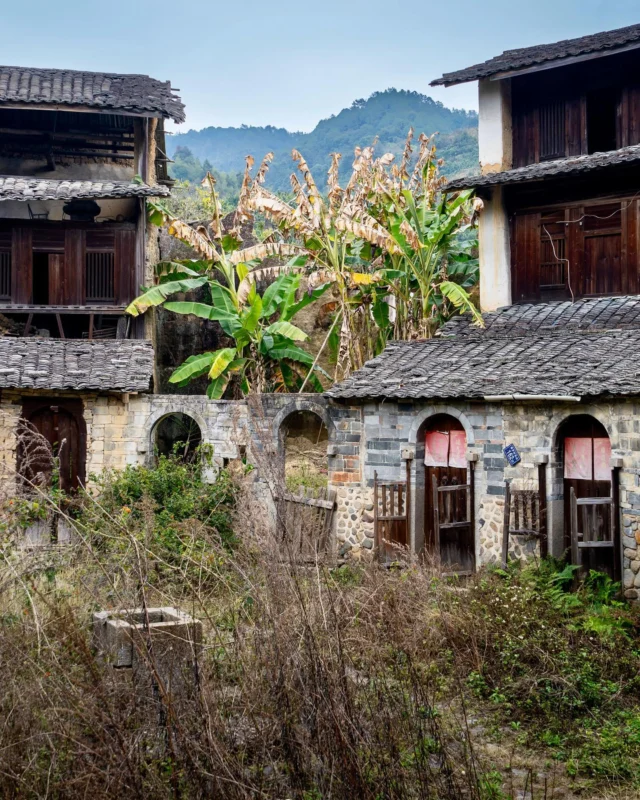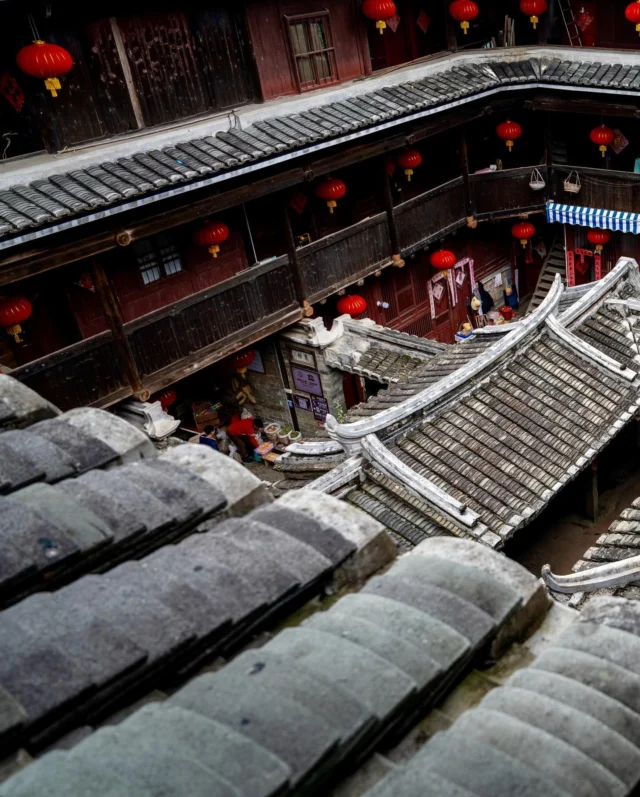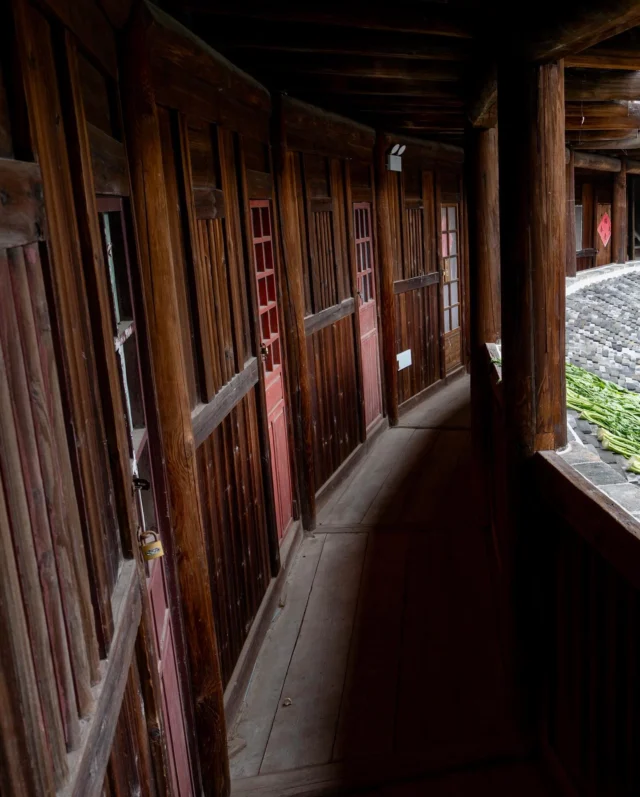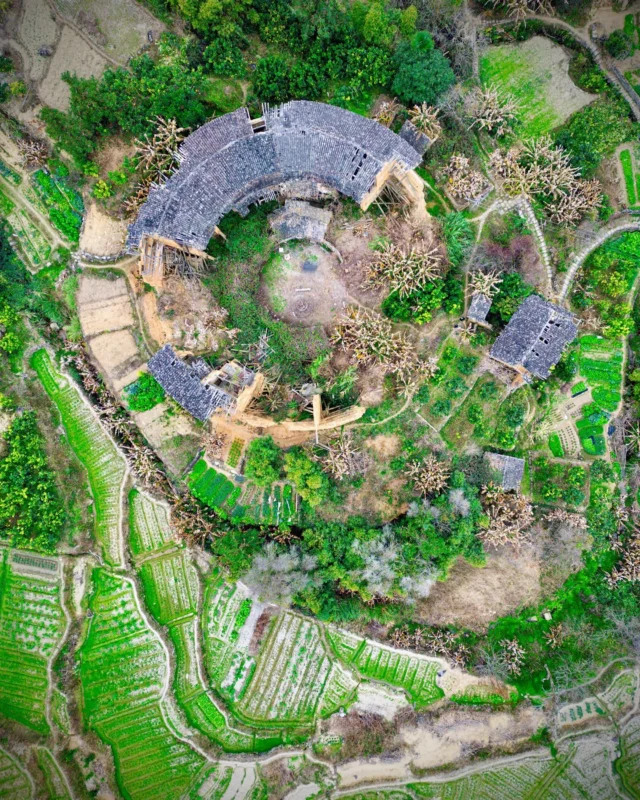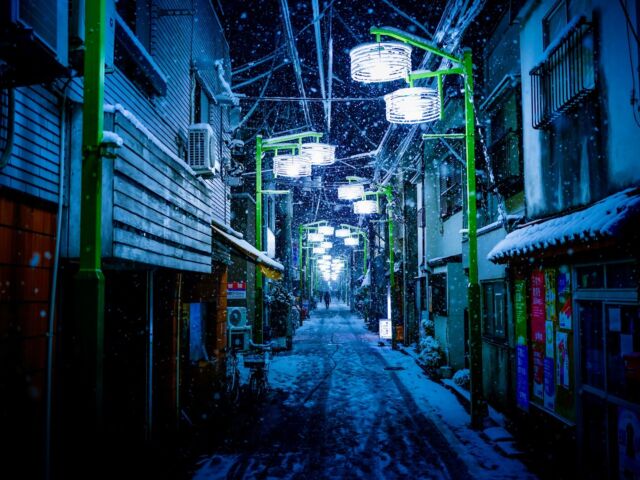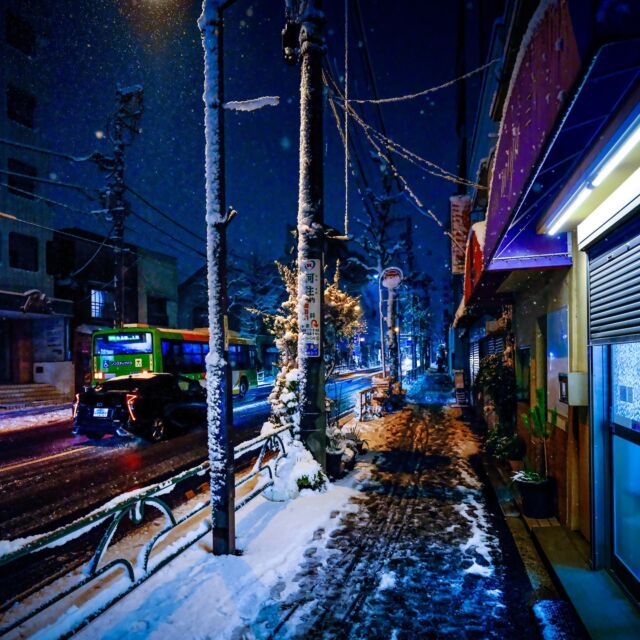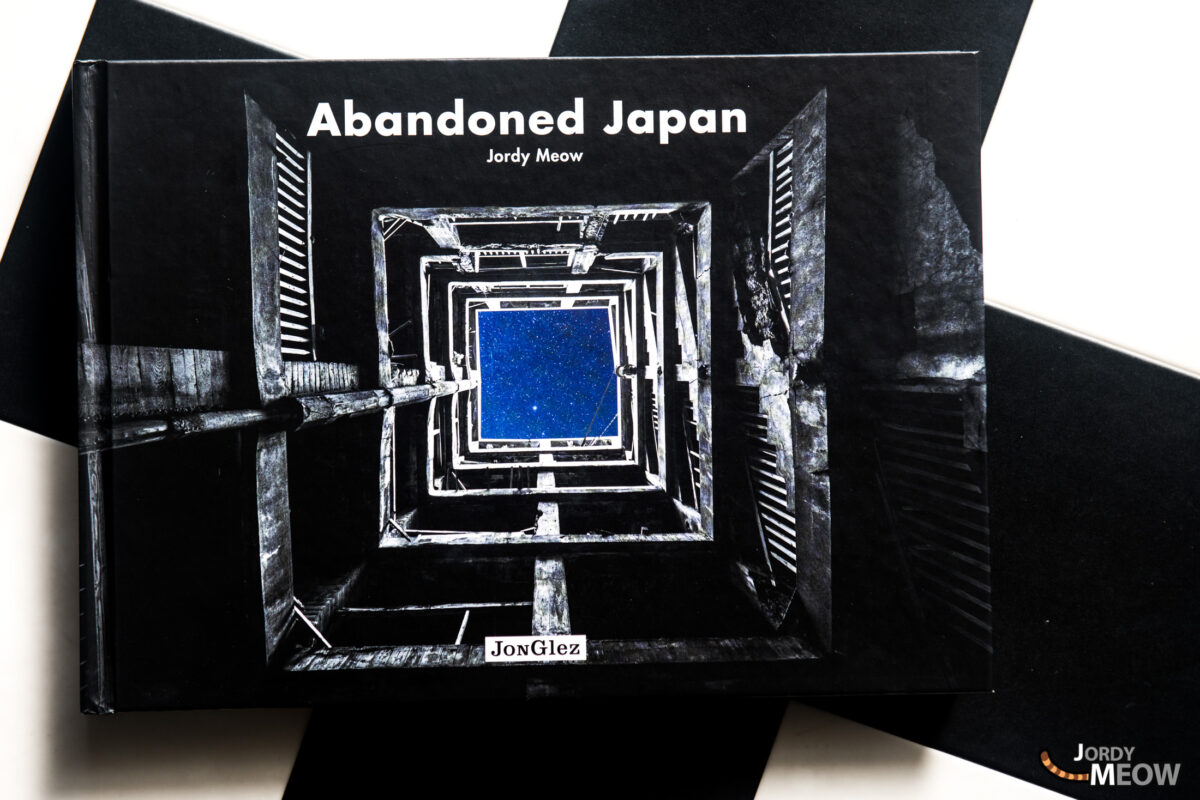Since ancient times Mount Hakusan (White Mountain), where the temple stands, has been revered as the residence of Kannon (Goddess of Mercy and Compassion). Hakusan is one of the three most beautiful mountains of Japan, along with Fuji and Tateyama (also objects of worship). The local belief is that the site has purifying powers and wandering souls come here in the hope of being reborn.
Natadera Temple was founded in 717 at this sacred site by a Buddhist monk to honour the goddess Kannon, who is said to inhabit the mountain. In the Edo era retired Emperor Kazan settled here. He erected new buildings, contributing to the prosperity and influence of the temple. The haiku master Matsuo Bashô came here on a pilgrimage and left compelling verses in which he praises the beauties of the place: “The autumn wind is whiter even than the white cliffs of the stony mountain.”
The temple was three times devastated by fires linked to the civil wars ravaging the country, and in 1640 a warlord of the Kaga domain, Maeda Toshitsune, ordered its reconstruction. In 1941, Natadera and all the buildings linked to Toshitsune were classified as national treasures to be protected. The temple has also been awarded a Michelin star for the beauty of its architecture and setting.
The temple grounds are huge and include several buildings, a garden with ponds, and meditation caves carved into the cliffside. The Kondo (main hall of worship) houses a wooden statue of the goddess Kannon. A three-storey pagoda and observation deck, on the hill opposite, overlooks the site.
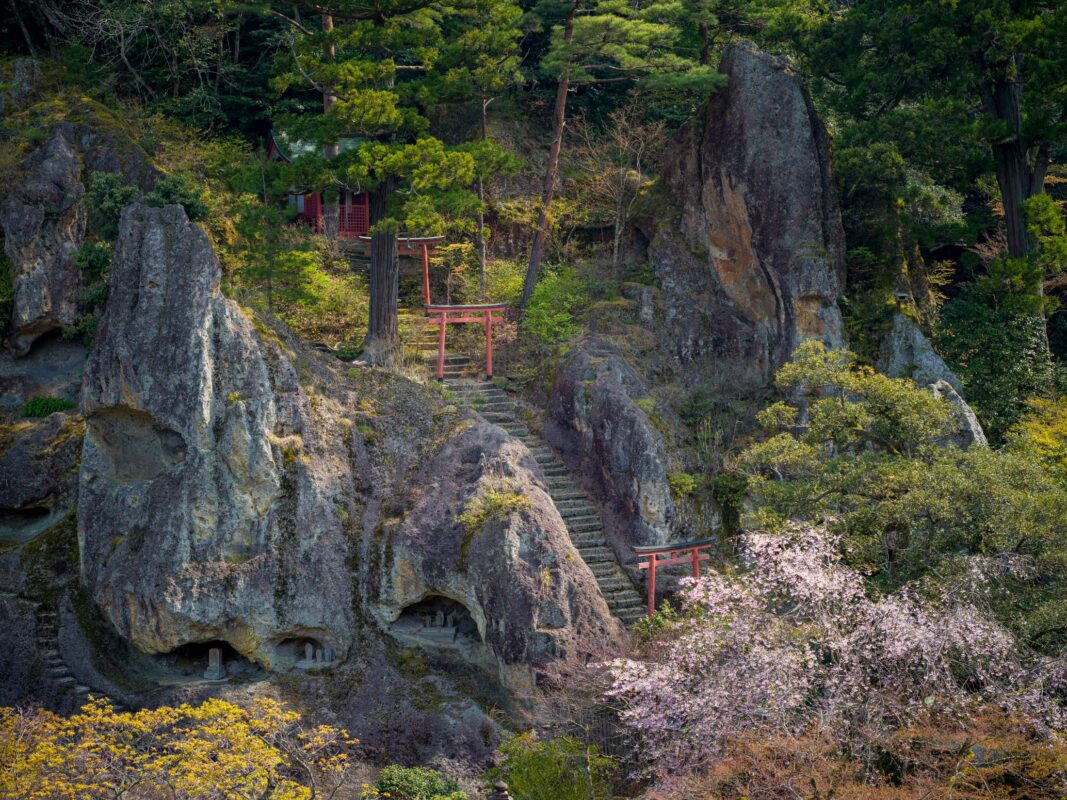
Numerous rock caves within the grounds are linked to the ancestral cult of Mount Hakusan. It is believed that these caves, compared with the inside of a mother’s womb, purify the mind. The temple carries on this practice, referred to as Umarekiyomaru, literally “to be reborn purified”.
The Iwaya Honden (main hall) was enshrined as a place of prayer for people wishing to purge their sins during their lifetime. Walking through the darkness of Iwaya Honden would symbolize emerging from the womb. Visitors to the caves pray to emerge as new beings. In other words, they go through the cycle of death, purification and rebirth.
And for more awesome content about Japan, follow Jordy Meow on Instagram ! 🎵

